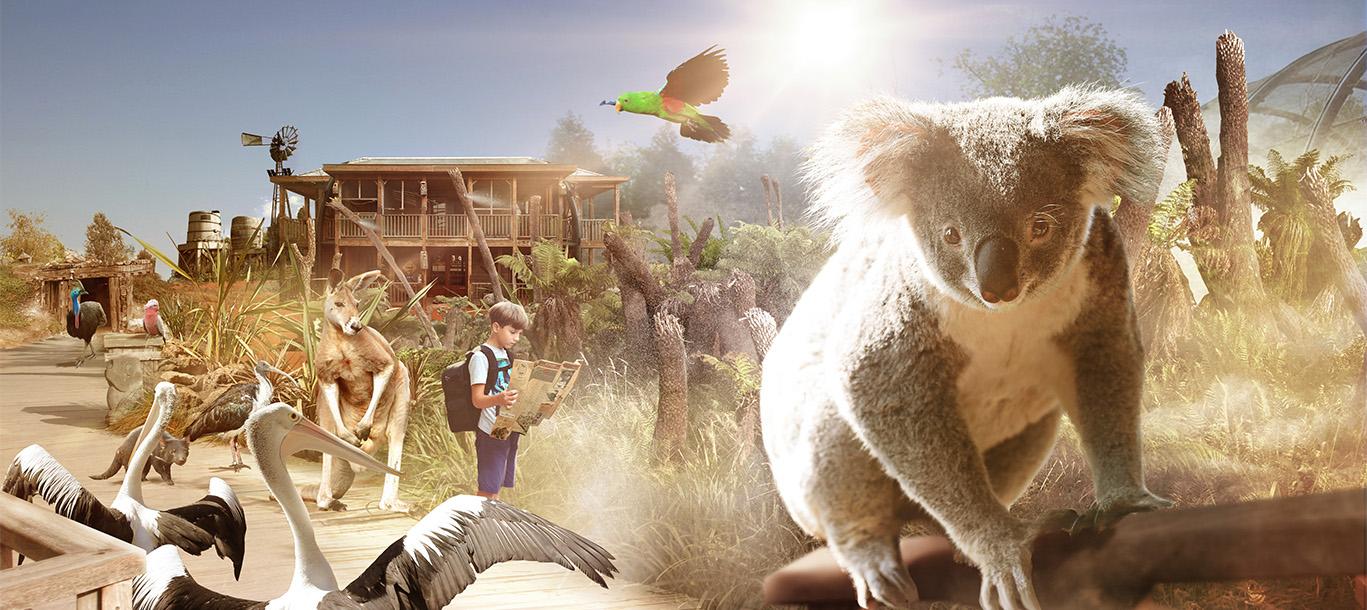The World of the Southern Cape has everything to surprise and amaze you. Oceania is far, very far... layovers included, it takes more than twenty hours on plane to travel between Paris and Sydney. With the help of the democratisation of travel, a great number of us can travel across America, Asia and Africa, but it is not the same for this continent at the end of the world, certainly the smallest by area, but also the least known to the general public. And as is the case for the other worlds of Pairi Daiza, there is really a lot to discover!
Let's move to another dimension, follow the guide for an unusual trip, an initiatory journey that passes, among others, by Ayers Rock, Alice Springs, the states of Queensland, Victoria and Tasmania. Let us also admire the work of the Maori craftspeople of New Zealand and celebrate the culture of the aborigines whose culture goes back more than 60,000 years! All this, to the sound of the strange and haunting didgeridoo, an instrument that is also thousands of years old.
During the formation of the continents, Oceania drifted away from the other landmasses on our planet. This largely explains the development of** a biotope that is quite specific** to this part of the world; fauna and flora are ample evidence of this with shapes, colours and features that are unusual to say the least. Mother Nature has to contend with temperatures in the arid areas of the Australian Outback that flirt with 50℃ during the day and -5℃ at night! Extreme conditions, however, have allowed the development of the Black Boys, plants with very slow growth and which reach heights of three to four metres. A black "trunk" from which emerges a large tuft of grass that is both stiff and flexible at the same time. That's what these inhabitants of the desert look like!
But this is nothing next to these tree ferns some of whose trunks reach one metre in diameter. You mentioned extravagance? What about this giant 253kg opal? You can find it at the entrance to a hut that evokes the gold rush and miners who emigrated en masse to Australia in the late 19th century.
On the animal fauna front, a visitor to the Southern Cape will also experience their share of record-breakers with the helmeted cassowary, one of the largest birds in the world (at 70 kilos) and which can reach 1.80 metres in height, as well as the big red kangaroo that seems to enjoy the amenities of Pairi Daiza, in this case the green grass and the nearby lake! As for the Australian water dragon, a very large sandy-coloured lizard, it can also be included in this category since it measures between 80 and 100cm in length.
But let’s now come to the stars of the show: the true ambassadors of Australia that are the koalas, delicate marsupials that feed mainly on eucalyptus leaves or, in a branch of the same family, the Tasmanian devils, rarely seen anywhere other than in their country of origin. There is still so much to write about the other distinguished guests that are the emus (big birds that is unable to fly), the wallaby, a little cousin, in the truest sense of the word, the kangaroo, or the budgerigar, very common in the large Southern Cape aviary, and the imposing Australian pelican. But now it’s time to wander further afield!
